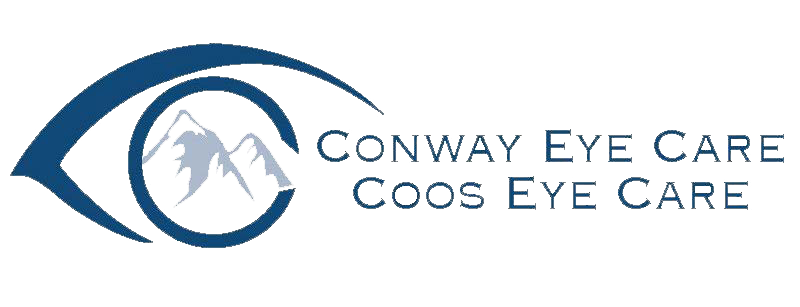Most people don’t realize the complexity that goes into selecting and fitting eyeglasses—it’s much more than just finding a pair of frames that complement your sense of style and your face. Your optician should be a well-trained technician who distills a complex set of information into the appropriate pair of glasses for you. Because everyone has unique facial features, as well as individual needs for vision correction, sizing and lifestyle, a personal consultation with a well-trained optician is essential for comfortable eyeglasses that perform well.
Translating your prescription
Your optician should work closely with your eye doctor to ensure he or she can understand and apply the prescription, as well as clarify any questions or issues that may arise. While many sources for eyeglasses are available, it’s a good idea to work with one who has a working relationship with your eye doctor. As with other professionals, it’s also appropriate to ask about the training and experience of the person who is assisting you with your eyeglasses.
The prescription is the initial focus of your optician’s attention, but he or she will add to that information to prepare the best pair or pairs of glasses for your lifestyle and vision needs. With the doctor’s prescription in hand, the optician will ask you about your daily routines and your lifestyle. Many patients have a variety of tasks requiring different vision corrections for different activities. For example, you may need one type of correction for close reading, another slightly different one for working on a computer and yet another one for driving a vehicle. Sailors or hunters might require extra acuity for long distance vision.
Other lifestyle information will assist the optician in preparing your personal prescription. He or she may ask whether you engage in activities that might require either UV coatings or scratch resistant coatings to protect your lenses. Other options include cosmetic lens colors to complement your look.
For mature patients who have presbyopia, or “aging eyes,” their eyes have a harder time changing focus for reading or near work. Rather than switching between distance glasses and readers, many people opt for a multi-focal prescription to change the focus between reading and other distance tasks. Today there are many different types of bifocal and progressive lens designs available, plus numerous variations of tri- and quadri-focal lens prescriptions. One or more of these alternatives will provide you with the appropriate correction for your daily activities.
One important aspect to note about the vision changes associated with aging eyes or presbyopia. Many people are tempted to solve their age-related vision changes with a pair of over-the-counter readers from the local drug store. But that may be a costly mistake. First, if the readers do not correct your problem accurately, you may suffer from eyestrain and headaches. Secondly, many silent and symptom-free eye diseases, such as glaucoma, are first noticed by slight changes in your vision that could mimic presbyopia. If you notice any change in your vision, it is very important to have your eyes examined by your eye doctor. To avoid or minimize potential vision loss from these silent eye diseases, early detection and treatment is essential.
Selecting the right frame
Once the optician notes this basic information, he or she can direct you to the frames that can accommodate the requirements for your prescription, as well as eyeglass frame shapes that complement your face as well as your style. For example, if you require a trifocal progressive prescription, there may not be enough “real estate” on a trendy, narrow frame design to accommodate a three progressive focal lens. A pair of sleek rimless frames may not be able to support the lens required for a certain types of prescriptions. Luckily, there are hundreds of styles and options to choose from!
And just as certain fashionable clothing trends do not fit every body type, there are also guidelines for the style of frames to fit your facial characteristics and complement your looks rather than detract from your appearance. The size of your head; the relationship between the location of your eyes, your nose and your ears; the height of the bridge of your nose—all can affect which style will be best for you. Your optician can assist you in narrowing down your choices based on your physical characteristics.
How you use your glasses may also affect the choice of frame material. If you find yourself in temperature extremes, you may want to opt for plastic frames, which won’t get too hot or cold in different conditions. If you keep breaking or damaging the frames on your current glasses, you may want to consider a flexible metal frame style.
Once you’ve chosen a frame to fill with your prescription, the optician will make the necessary measurements. He or she will measure the distance between the pupils and the vertex distance, which is the distance between the eye and the lens. The optician then prepares the work order for the lenses specified by the prescription and the measurements and send it to the ophthalmic laboratory for manufacture. Once the prescription lenses return, the optician will verify the prescription has been made correctly.
Then, the frame is fitted to you—checking the nose pads, the temples, the fit behind the ears, and whether the frames sit level on your face. If the measurements have been completed properly, your glasses should be comfortable and provide you with the best possible vision. Some prescriptions, such as multi-focal lenses may take your eyes a little time to adjust to. If your new glasses are not comfortable, or if you have any difficulty or blurred vision, you should contact your optician and optometrist promptly.
And finally, you’ll want your optician to be located conveniently nearby so that you can have your glasses periodically re-aligned or repaired, without the time and expense of travel.

